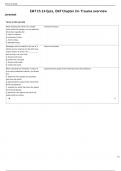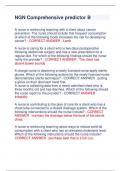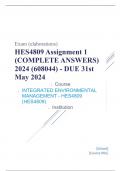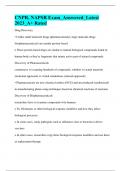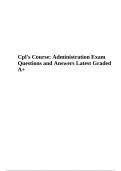Exam (elaborations)
EMT Ch 24 Quiz, EMT Chapter 24- Trauma overview Terms in this set (40) When assessing the interior of a crashed motor vehicle for damage, you are gathering information regarding the: A. index of suspicion. B. mechanism of injury. C. kinetic energy. D.
- Course
- Institution
EMT Ch 24 Quiz, EMT Chapter 24- Trauma overview Terms in this set (40) When assessing the interior of a crashed motor vehicle for damage, you are gathering information regarding the: A. index of suspicion. B. mechanism of injury. C. kinetic energy. D. potential energy. mechanism of injury...
[Show more]
